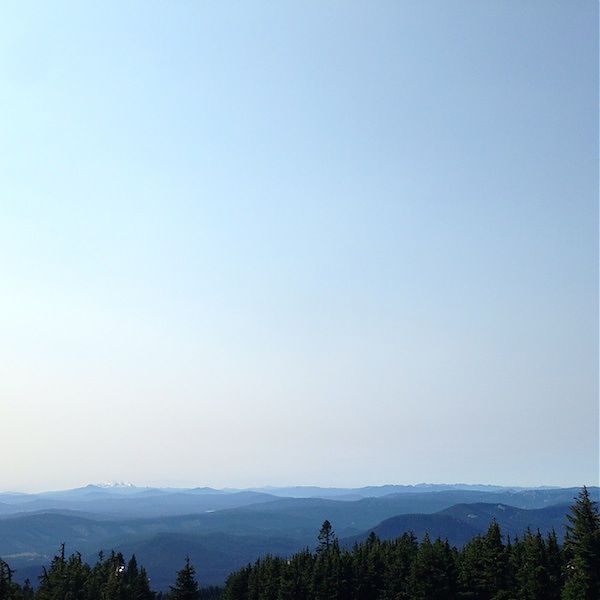Portfolio | Timblerline Lodge

I am very keen about travel, not only personally – you know that – but also about travel for as many Americans as can possibly afford it, because those Americans will be getting to know their own country better; and the more they see of it, the more they will realize the privileges which God and nature have given to the American people.
President Franklin Delano Roosevelt spoke at the September 28, 1937 dedication of Timberline Lodge, the resort hotel, still owned by the National Forest Service, built at 6000 feet on the slopes of Oregon’s Mount Hood. The hotel, built in a scant 15 months, was a Works Progress Administration project, designed to employ workers and craftspeople idled by the Depression in its construction, and to offer jobs and recreation afterward. In FDR’s remarks, which were witnessed by 1200 people, he sets out a new vision for how Americans should interact with nature, particularly in the Western United States, setting the productive lumber industry next to playtime in the forest.



The hotel, a remarkable work of art made by hand, indeed takes timber as its theme, from a trunk-like central fireplace, to branching, Frank-Lloyd-Wright adjacent light fixtures, to chairs hewn from logs and apparently woven from bark. It’s fascinating to see modernism mixed with what some Oregon history sites like to call the “Cascadian school” of architecture. There’s the Wright influence, which permeates the color palette as well as the way nature is abstracted in hardware, fixtures and different decorative elements. There’s the modern influence, seen in chairs cantilevered on flat pieces of blackened steel. Bicycle tubing would have been a bridge too far. And there’s the Arts & Crafts influence, seen in the hardware, the signage, even the decorative mullions on the windows. The nine-square window in the balcony bar seems like Greene & Greene grown all out of proportion in the Oregon summer sun.



Reading the plaques on site at the hotel, prior to taking a hike up the mountain to touch snow in August, it was hard to reconcile the grandeur with a public works project. But the art was an integral part of the back to work effort; 100 artists worked alongside the 400 construction workers on every aspect of the hotel. One story says each hotel room has original botanical prints. (There’s a book that chronicles it all.) I’ve rarely seen such a stunning water fountain as the one at Timberline, backed by a gold mosaic mural. One newel post was carved with two-foot eagle, another with an owl. The grandeur (Timberline is much larger than the Forest Service’s other period lodges) obviously needed some explanation even at the time. I found online a document drafted for Congress justifying the WPA’s Federal Art Project.
Timberline Lodge, with its opportunity for the revival of dormant crafts and arts, offered employment to many men in this classification, and in their successful absorption suggested the possibility of a permanent program designed to perpetuate handicrafts and to make them serve a social need.



Timberline’s history after completion has not been smooth. It was closed during the Second World War, and again in the mid-1950s after mismanagement brought gambling and prostitution to the mountain. The hero of the story is Richard L. Kohnstamm, shown in a variety of Nordic sweaters in period photos. He took over in 1955 and, boosted by the increasing popularity of alpine skiing, it became a success. The sub-La Tourette Wy’East Day Lodge was added below the 1938 building in the early 1980s to accommodate skiers. It’s terribly gloomy, despite attempts to translate the overscaled rusticity into post-modern terms. It’s also orphaned in a vast parking lot. If you visit, speed across the tarmac and enter the lodge, where no one seems to mind if you wander around the public spaces. Behind it you can access a variety of trails to wildflower meadows and the desired summer snow.
On X
Follow @LangeAlexandraOn Instagram
Featured articles
CityLab
New York Times
New Angle: Voice
Getting Curious with Jonathan Van Ness